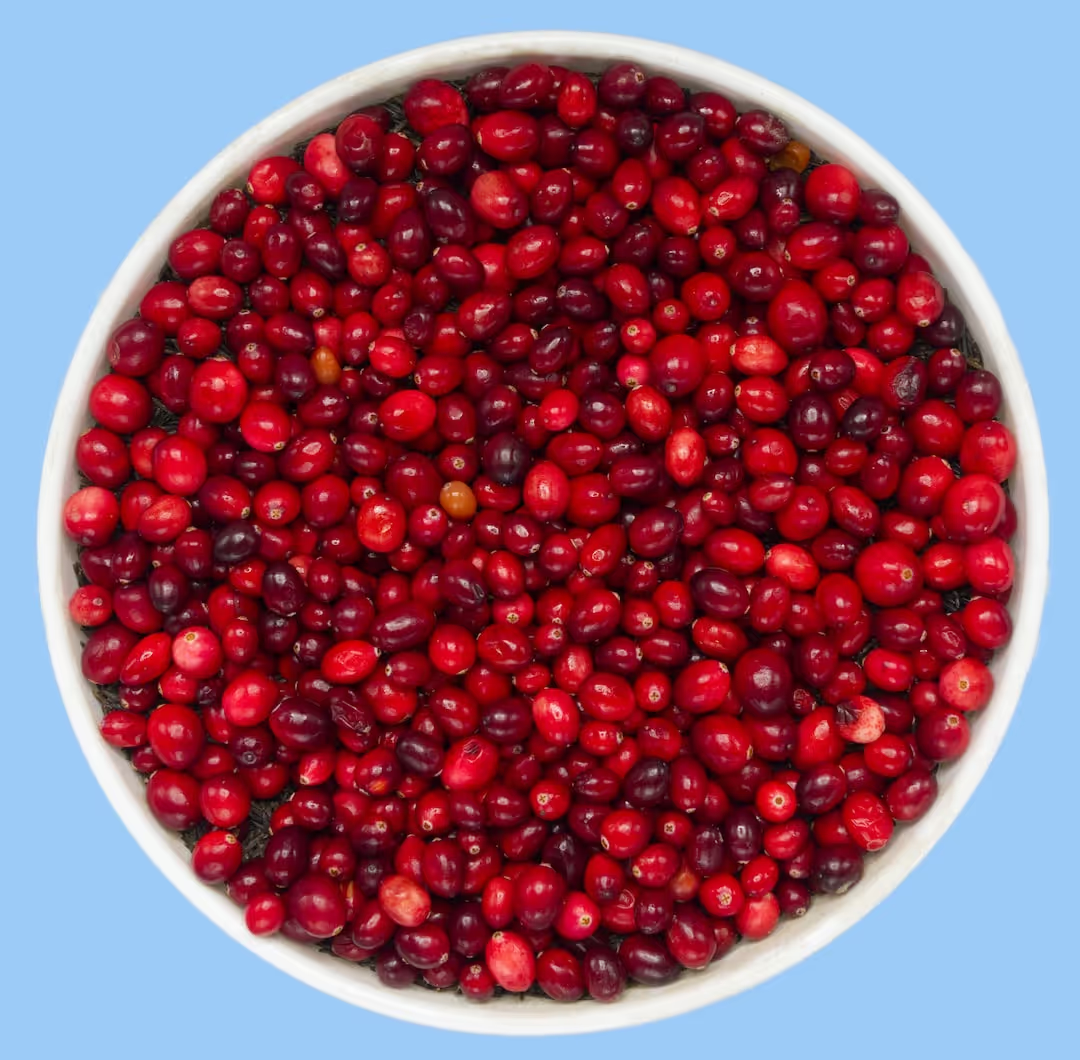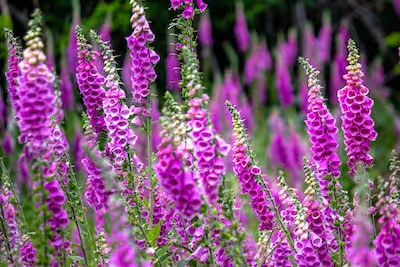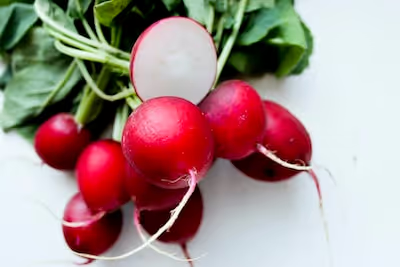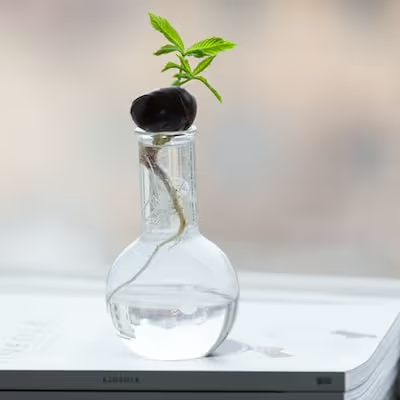Growing Cranberry: A Simple Step-by-Step Gardening Guide

Growing Cranberry
Growing cranberry demands patience, acidic soil, and ample water. Choose a sunny, bog-like location; cranberries thrive in low-pH conditions around 4.5 to 5.5 and appreciate consistent moisture. Plant creeping cranberry vines in early spring, tend them carefully, and prepare to harvest tart ruby treasures each autumn—read on to master the art of growing cranberry in your own backyard.
Cheatsheet: Quick Cranberry Planting & Care
🌱 Site & Soil
- Peat moss or acidic compost
- pH: 4.0-5.5 (acidic)
- Full sun, shelter from wind
- Wet, sandy, organic-rich soil
- Space plants 2 ft (60 cm) apart
🛠️ Tools and Products You'll Need
- Spade or trowel
- Cranberry cuttings or rooted plants
- pH test kit
- Watering can or hose
- Mulch (pine needles or sawdust)
- Pruners
- Netting (birds)
🌿 Step-by-Step Planting
- Prepare Bed: Dig 8 in (20 cm) deep, mix in peat moss. Remove weeds.
- Plant: Set cuttings/rooted plants 2 in (5 cm) deep, 2 ft (60 cm) apart.
- Water: Soak after planting; keep soil moist but not flooded.
- Mulch: Add 2 in (5 cm) pine needles. Test soil pH twice yearly.
- Weed & Prune: Remove weeds, trim runners for bush growth.
- Harvest: Pick berries when deep red, firm (Year 2+).
💧 Water & Feeding
- Moist, not soggy soil
- Rainwater ideal for acidity
- Feed with balanced, acid-loving fertilizer each spring
🛡️ Troubleshooting
- Watch for fungal leaf spot, scale insects
- Netting deters birds
- Refresh mulch yearly for weed suppression
🥗 Nutrition & Self-Sufficiency
- Rich in antioxidants, vitamin C, fiber
- Boosts urinary tract health
- Store fresh berries up to 2 months; freeze longer
-
Growing Cranberry: what the plant actually wants
I grow Growing Cranberry like a cool-climate groundcover that happens to throw rubies in fall. It prefers full sun, long cool springs, and air that leans maritime.
USDA Zones 2 to 7 work best, with winter chill locking in dormancy. Ideal soil pH sits at 4.2 to 5.2, which is blueberry territory but with more sand and less fluff.
This plant likes its soil like strong coffee. Acidic, dark, and never weak.
Cranberries set fruit on short woody uprights that sprout from runners. Runners first, uprights next, fruit third.
Soil, water, and media
I build beds shallow and broad, 6 to 8 in deep and wide as space allows. A proven mix: 50 percent peat moss, 30 percent coarse sand, 20 percent pine bark fines.
Avoid lime or compost loaded with calcium. Rainwater beats alkaline tap water in most towns.
Keep soil moist like a wrung sponge. Standing water rots crowns fast.
Step-by-step: Growing Cranberry from plug to harvest
- Pick a cultivar that fits your climate and harvest window. I favor Stevens for yield, Howes for keeping quality, and Ben Lear for early color.
- Buy rooted plugs or one-year cuttings from a nursery that handles Vaccinium crops. Skip bare soil dug from a bog.
- Site prep comes next. Test pH, then acidify with elemental sulfur if above 5.5, rechecking after 4 to 6 weeks.
- Build a wood or plastic border to hold the sandy mix. Depth 8 to 10 in if your native soil drains poorly.
- Fill with the peat sand bark blend and water it in. The bed will settle 10 to 20 percent.
- Plant runners shallow, crowns just at the surface. Spacing 12 to 18 in apart so vines knit in a season or two.
- Irrigate lightly and often the first season. Target 1 to 1.5 in water per week total, or 25 to 38 mm.
- A simple drip loop keeps foliage dry and roots happy. Mulch with 0.5 in of clean sandbox sand after planting.
- Feed sparingly. Use ammonium sulfate or an acid-forming organic at 0.1 to 0.2 lb actual N per 100 sq ft for the season, split across late spring and early summer.
- Too much nitrogen drives runners and delays uprights. Fruit takes a back seat if you overdo it.
- Train vines by pinning a few runners outward with landscape staples. Let them colonize, then clip tips once they reach the border.
- Each winter or very early spring, topdress with 0.25 to 0.5 in of sand. This renews uprights, suppresses pests, and keeps growth compact.
- Bloom arrives late spring. Bees handle the rest, so I keep pesticide sprays off during flowers.
- If frost threatens below 28 F, about minus 2 C, throw frost cloth over hoops before dusk. Remove at sunrise.
- Harvest runs late September into November. Pick when berries turn deep red and bounce slightly in the hand.
- Store unwashed fruit at 35 to 40 F, or 2 to 4 C, for up to a month. I freeze the surplus flat on trays, then bag.
My field notes that save seasons
If leaves yellow while veins stay green, your pH crept high or iron locked up. Acidify water and soil, then drench with chelated iron.
If uprights stunt and tips blacken, you likely overwatered. Back off and add more coarse sand at topdress.
Birds will raid the ripe fruit in one loud afternoon. Net early and sleep better.
Containers for small spaces or warm zip codes
Use a wide, low container 18 to 24 in across and 10 to 12 in deep, with big side and bottom holes. Fill with the same peat sand bark blend.
Set in full sun but give light afternoon shade during heat waves over 85 F, 29 C. Containers dry fast, so monitor daily in July and August.
Varieties I trust for Growing Cranberry
- Stevens: high yielding hybrid, uniform fruit, reliable across regions. Needs support from bees for best set.
- Ben Lear: early color, strong flavor, good for shorter seasons. Slightly softer fruit.
- Howes: late ripening, firm berries, great storage. Suits coastal climates.
- Early Black: heritage cultivar with small berries and complex taste. Slower to fill a bed.
- Crimson Queen and Mullica Queen: Rutgers picks with vigorous set and large fruit. Good for home beds that get full sun.
Yields and patience
Expect light fruit in year two and real harvests by years three to four. A mature bed can produce 0.3 to 0.6 lb per square foot, or 1.5 to 3 kg per square meter.
Individual plants in containers give 1 to 2 lb per season, or 0.5 to 1 kg, once settled. The sand topdress pays for itself in yield.
Pruning and sanding rhythm
Every winter I shear straggly runners back to the frame with hand shears. Keep uprights sunlit or fruiting drops.
Annual 0.25 to 0.5 in sand keeps stems youthful and berries cleaner. Use clean, washed, medium-grain sand only.
Pests and diseases, managed the calm way
- Caterpillars and cranberry fruitworm: scout at dusk for webbed berries. Handpick, or use a labeled spinosad spray after bloom if pressure builds.
- Root rot from Phytophthora: improve drainage, reduce irrigation, and avoid flooded pots. A raised bed fixes most of it.
- Leafhoppers: encourage predators with diverse flowers near the bed. If needed, a light horticultural soap rinse before bloom helps.
- Fruit rot complex in humid summers: improve air flow, sand topdress, and harvest promptly. Cold storage slows it down.
Water myths, corrected
Extension specialists remind growers that cranberries grow on vines in sandy soils; flooding is for harvest and frost protection, not day-to-day culture. UMass Cranberry Station.
In gardens, manage moisture, not floods. Keep the crown breathable and the root zone evenly damp.
Numbers and context that help planning
USDA data show Wisconsin produces over half of U.S. cranberries, with Massachusetts contributing roughly a quarter. That cool-climate bias explains the crop’s love for long, mild springs.
Berries float because they carry internal air pockets. That quirk helps cleaning and makes the bounce test more than folklore.
Seasonal calendar for Growing Cranberry
- Late winter: shear runners, topdress sand, test pH, plan sulfur if needed. Repair borders and drip lines.
- Spring: light feeding as growth starts, weed weekly, protect from late frost. Keep bed evenly moist.
- Early summer: stop nitrogen once bloom begins. Scout insects at dusk and dawn.
- Mid to late summer: maintain moisture and air flow. Net before first berries blush.
- Fall: harvest firm, fully colored berries. Rake leaves off the bed after the first frosts.
- Winter: mulch with pine needles in colder zones and let snow insulate. Avoid ice buildup on containers.
Tools and supplies I actually use
- Soil pH meter or at least a reliable test kit. Elemental sulfur and an acid-forming fertilizer in small bags.
- Coarse sand by the bag, fine pine bark, and peat moss from a source that states low carbonate content. Clean rain barrel if your tap runs alkaline.
- Drip line with a simple timer. Frost cloth and a few hoops for late cold snaps.
- Bird netting, landscape staples, and hand shears. A shallow tub for washing berries after harvest.
Buying plants and what to ask the seller
Ask for named cultivars and confirm they are Vaccinium macrocarpon. Request the propagation year and whether plants were sand topdressed in the nursery.
Order in late winter for spring shipment. Keep roots cool and moist until planting day.
Soil and water chemistry, simplified
If your irrigation water tests above pH 7.5 or carries high bicarbonate, acidify the water with a safe citric or phosphoric acid injection at low rate. Or collect rainwater and blend 50 to 100 percent into your weekly schedule.
Keep the media’s base saturation low in calcium and high in hydrogen. The plant thanks you with greener leaves and tighter clusters.
Companions and alternatives
- Companions: lowbush blueberry and wintergreen share the acid bed. Keep root competition modest and spacing generous.
- Alternatives: lingonberry prefers similar conditions and fruits twice a year. Huckleberry fits wild, sandy edges and rewards patience.
Cooking and storage payoffs that shape how I grow
Firm, late-picked berries keep longer and slice cleaner for relish and dried fruit. Earlier fruit sings in sauces and ferments fast for shrubs.
Color deepens with cool nights in September and October. Hold off harvest until sugars climb and flavor rounds out.
Quick FAQ for Growing Cranberry
- Do I need a bog: no. Grow in acidic, sandy beds kept evenly moist.
- Do I need two varieties: helpful for spread of bloom, but plants are self-fertile. Bees boost yield more than extra cultivars in small beds.
- Can I grow in heat: try containers, morning sun, and afternoon shade during heat spikes above 90 F, 32 C. Keep roots cool and avoid hot reflected surfaces.
- Why sand every year: it renews fruiting uprights, buries weeds, and firms the mat for easier picking. It is the quiet trick behind steady production.
Frequently Asked Questions About Growing Cranberry
What soil conditions best support cranberry growth?
Cranberries thrive in acidic, sandy soils with a pH range between 4.0 and 5.5. Incorporate organic matter, like peat moss, to maintain acidity and ensure proper drainage.
How much sunlight do cranberry plants require?
Cranberry vines flourish in full sun, requiring at least 6 to 8 hours of direct sunlight daily. Choose a site clear of shade to ensure vigorous growth and abundant fruit production.
How often should cranberry plants be watered?
Consistently moist soil benefits cranberry growth, particularly during fruit formation. Water regularly, providing approximately 1 to 1.5 inches (2.5 to 3.8 cm) per week. Avoid waterlogging to prevent root diseases.
What temperature range suits cranberry plants best?
Cranberry plants prefer climates with mild summers and cold winters. Optimal growth occurs in summer temperatures around 60–75°F (15–24°C). During winter dormancy, cranberries tolerate temperatures as low as -20°F (-29°C).
When is the right time to harvest cranberries?
Harvest cranberries in autumn, typically from late September through October, once berries develop a deep red color and firm texture. Ripe berries easily detach from vines when gently pulled or raked.
How can cranberry plants be protected from pests and diseases?
Regular monitoring and implementing preventive measures, such as proper spacing and pruning, help reduce pest and disease risks. Employ beneficial insects and organic practices, like applying neem oil, to manage common cranberry pests naturally.
Do cranberry plants require fertilization?
Cranberries benefit from fertilization using low-nitrogen, acid-formulating fertilizers applied in early spring and again shortly after bloom. Conduct soil tests periodically to guide precise nutrient application based on plant needs.
Growing Cranberry rewards patience and consistency—this isn’t a crop that responds to shortcuts. Start with acidic soil and constant moisture; those tart berries love their roots wet but never waterlogged. Regular mulching keeps weeds at bay and moisture in. Pruning runners each spring encourages healthy growth and bigger yields. Give your patch a bit of time, and you’ll be knee-deep in vivid berries by fall. If you’re after more flavor-packed shrubs, consider exploring growing blackcurrant as well. In the end, growing cranberry is about slow rewards—an honest harvest that’s well worth your hands in the muck.
The Homesteader's Guide to Sustainable Cranberry Cultivation
Boost Soil Health Naturally
- Peat Alternative: Compost aged pine needles or oak leaves (pH 4.0–5.5) to naturally lower soil acidity.
- Cover Crops: Plant winter rye or oats nearby to enrich soil nutrients and reduce weeds without chemical applications.
Optimize Water Usage
- Rainwater Harvesting: Collect and store rainwater in barrels to supply consistent moisture without strain on resources.
- Drip Irrigation: Install drip lines carefully spaced along cranberry beds for efficient water usage and reduced fungal risk.
Natural Pest & Disease Management
- Beneficial Insects: Encourage ladybugs and lacewings to control aphids and cranberry fruitworms.
- Neem Oil Spray: Apply diluted neem oil (1 tablespoon per gallon or per 3.8 liters water) monthly to manage fungal diseases naturally.
Preserving Your Cranberry Harvest
- Drying: Air dry cranberries at 135°F (57°C) for 8–12 hours for storage lasting up to two years.
- Canning: Preserve harvested berries as jams or cranberry sauce, ensuring year-round nutritional availability.
Sustainability Stats Worth Knowing
- Cranberries contain antimicrobial compounds beneficial for immune health and urinary tract wellness.
- Homestead-cultivated cranberries reduce dependency on commercial agriculture methods by up to 75%.
- Each square meter (10.8 sq. ft.) of sustainably grown cranberries can produce approximately 900 grams (2 lbs.) annually.
Find out which plants will thrive in your garden!
Answer a few fun questions and get custom plant recommendations perfect for your space. Let’s grow something amazing together!

start your season





